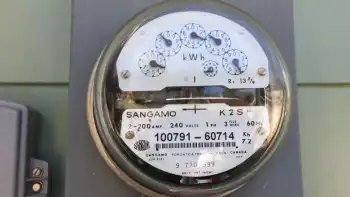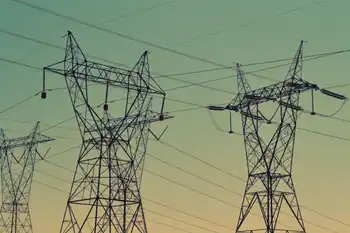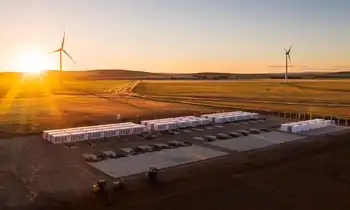Coal's future not in Carolinas
RALEIGH, NORTH CAROLINA - At a recent global warming conference, Duke Energy chief executive Jim Rogers said he wouldn't build another coal-fired power plant in the Carolinas because of its geology.
Any future plants would have to offer technology that could capture and store carbon dioxide underground. Geography in the Carolinas isn't suitable the way it is in Indiana, where Duke has a new coal-gasification plant under way, he said. That technology - which turns coal into a gas rather than burning it directly - might allow Duke to pump the gas underground for storage, he said.
Duke has researched building pipelines to send the gas for storage to the Midwest. But it's too expensive, he said. So the CEO said Duke's Cliffside power plant project in the Blue Ridge foothills would be the Charlotte utility's last in the Carolinas.
Instead, the CEO envisions boosting major transmission capabilities so Duke could build its future coal plants in its three Midwest states and nuclear power plants in the South and then zap the electricity back and forth, as needed. Ideas to reduce carbon dioxide emissions floated around the annual Emerging Issues Forum at the McKimmon Center at N.C. State University in Raleigh.
A lineup of speakers, including New York Times columnist Thomas Friedman, traded ideas and delivered speeches about global warming and green energy. Rogers was on one of the panels. Coal-fired power plants are among the largest sources of carbon dioxide, blamed as a cause of global warming.
Scientists say the rising temperature is hurting the environment and threatening mankind, including melting polar ice caps that could cause coastal flooding and massive hurricanes. The forum featured leaders from the energy, governmental and academic worlds, including U.S. Sen. Richard Burr, R-N.C., and Nobel Prize winner Rajendra Pachauri, an N.C. State graduate who runs the U.N. Intergovernmental Panel on Climate Change.
The annual conference this year is focused on global warming and how the state can or should economically benefit from it. The forum continues today and features Bank of America Corp. chief executive Ken Lewis. Opponents of the Cliffside project and the use of fossil fuels say energy efficiency and renewable energy, such as wind and solar, should replace old-fashioned power plants.
Rogers told the crowd at the forum that the $2.4 billion Cliffside project was needed to bridge the gap to a noncarbon world. Energy demand requires it, he said. The morning began with a dozen protesters outside the conference center. The small group from N.C. WARN held a banner criticizing the 800-megawatt, coal-fired Cliffside project. The protesters said Rogers' commitment to energy efficiency and clean energy is hypocritical.
Friedman, the morning headliner and author of the bestselling "The World is Flat," had his own take on how to reduce carbon dioxide emissions. He said the country needs a "massive carbon tax" to jolt industry into pushing the green movement beyond the pop culture stage.
Former Duke CEO Paul Anderson has said a tax on carbon emissions, as long as it was economy-wide, would be a good idea. But Rogers said he supports a different approach called cap-and-trade. The complicated method involves trading pollution credits. It would give utilities time to meet a national emissions cap that would be slowly lowered over time.
But Rogers also proposed a national tax on electricity that everyone who used power would have to pay. That money could then be funneled into research and development to find alternative ways to produce clean energy, he said.
The annual conference this year is focusing on how the state can or should economically benefit from global warming. Speakers said that the state could benefit from money that would flow to research institutions trying to come up with energy innovations. And new companies might also locate in the state because of those research universities.
A clean energy revolution will also require traditional manufacturing infrastructure. For example, a study said the Carolinas would benefit economically from a coming wind energy boon because the state has the capability to produce gears, blades and other parts needed to build a windmill.
PPG Industries near Shelby was able to retool some of its operations to manufacture windmill blades. And General Electric also recently moved its windmill turbine manufacturing headquarters to its Greenville, S.C.
Related News

Power outage update: 252,596 remain without electricity Wednesday
EASTERN CAROLINA - Power is slowly being restored to Eastern Carolina residents after Hurricane Florence made landfall near Wilmington on Friday, September 15.
On Monday, more than half a million people remained without power across the state.
As of Wednesday morning at 1am, the Dept. of Public Safety reports 252,596 total power outages in North Carolina.
More than half of those customers are in Eastern Carolina.
More than 32,000 customers are without power in Carteret County and roughly 21,000 are without power in Onslow County.
In Craven County, roughly 15,000 people remain without power Wednesday morning.
Many of the state's outages are effecting the Wilmington area,…




